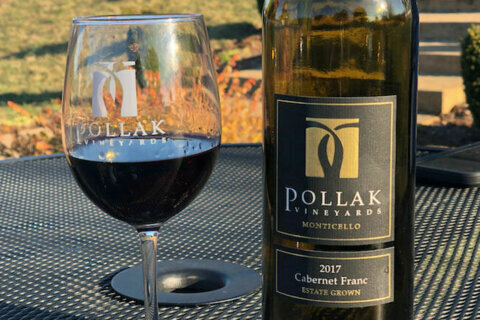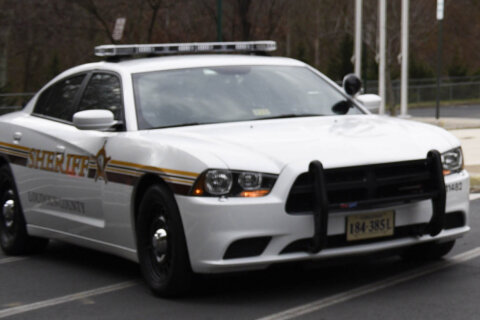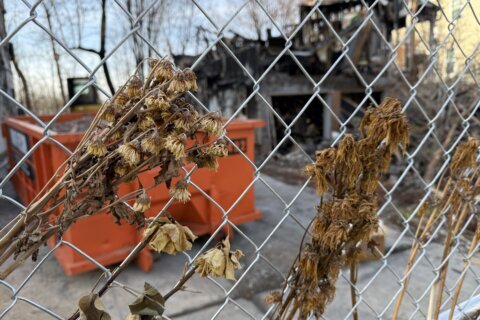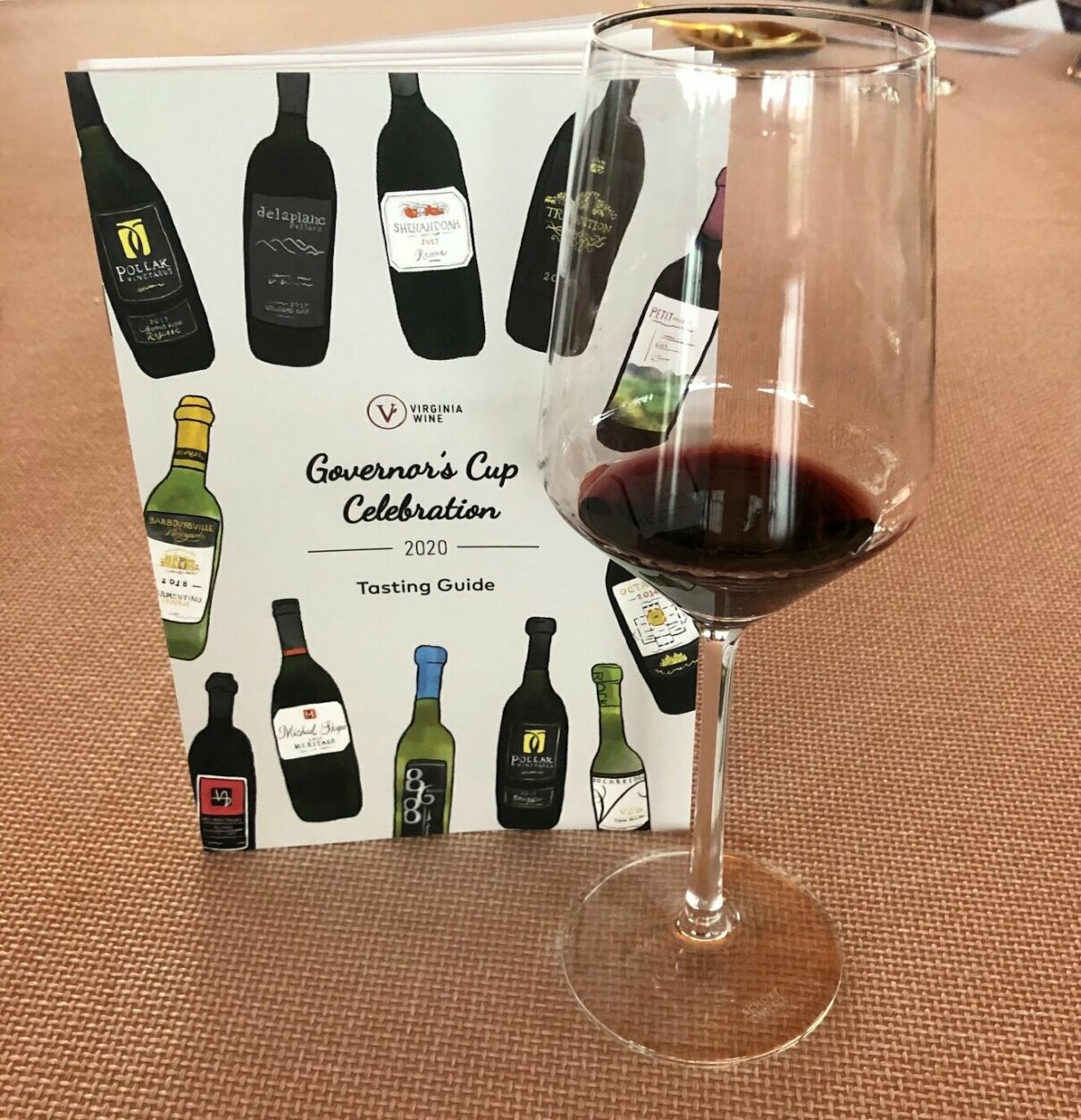
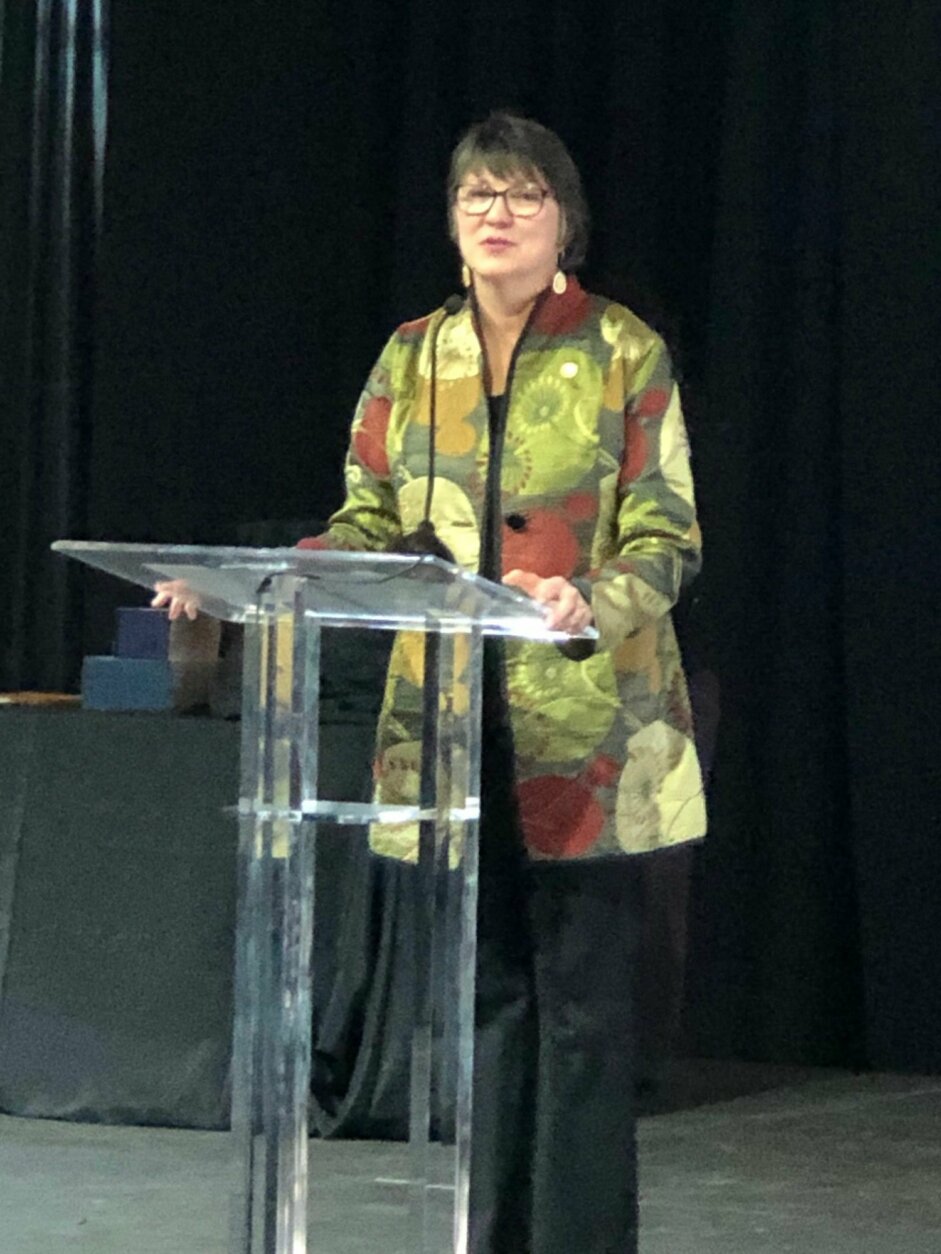
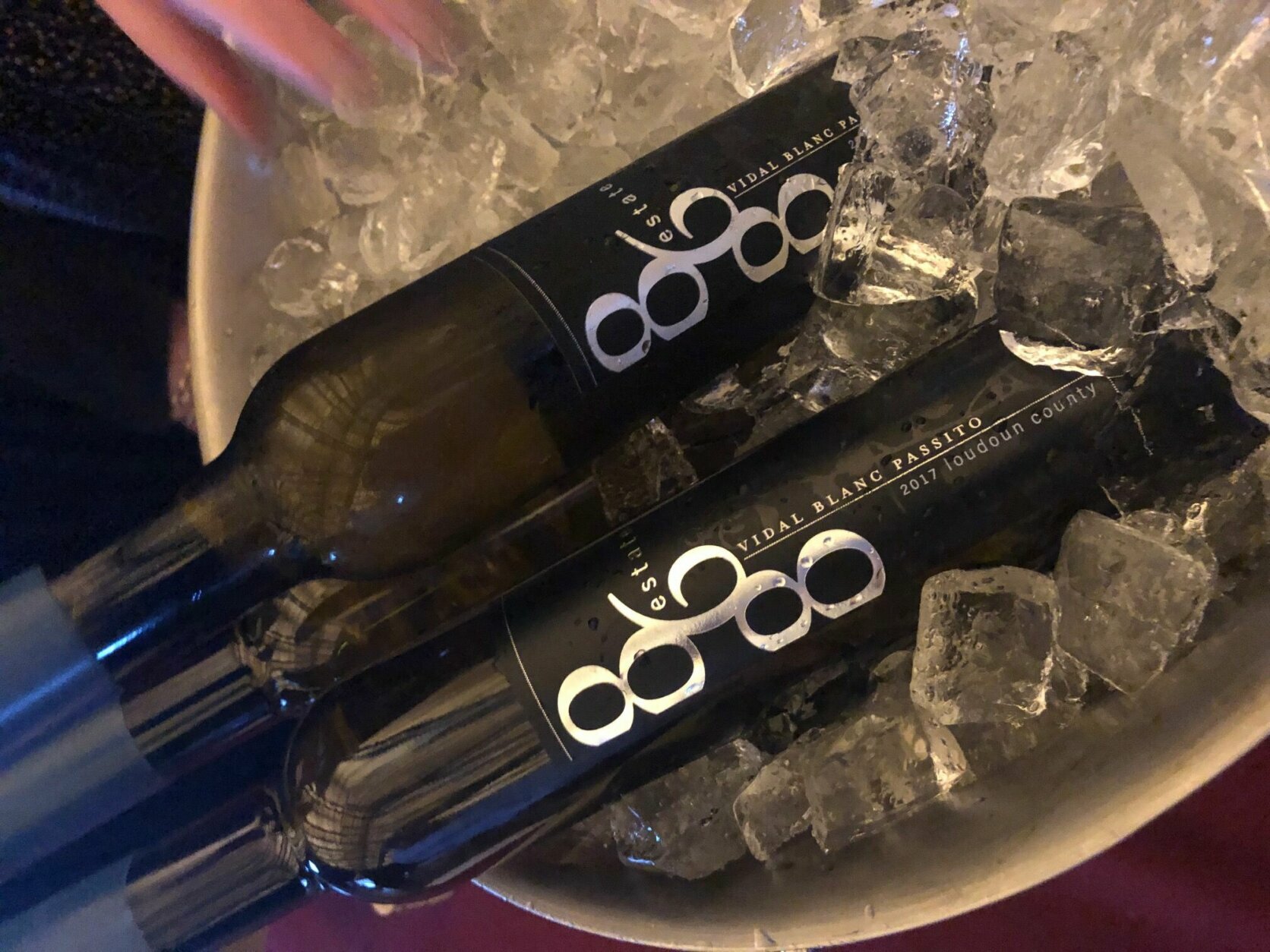

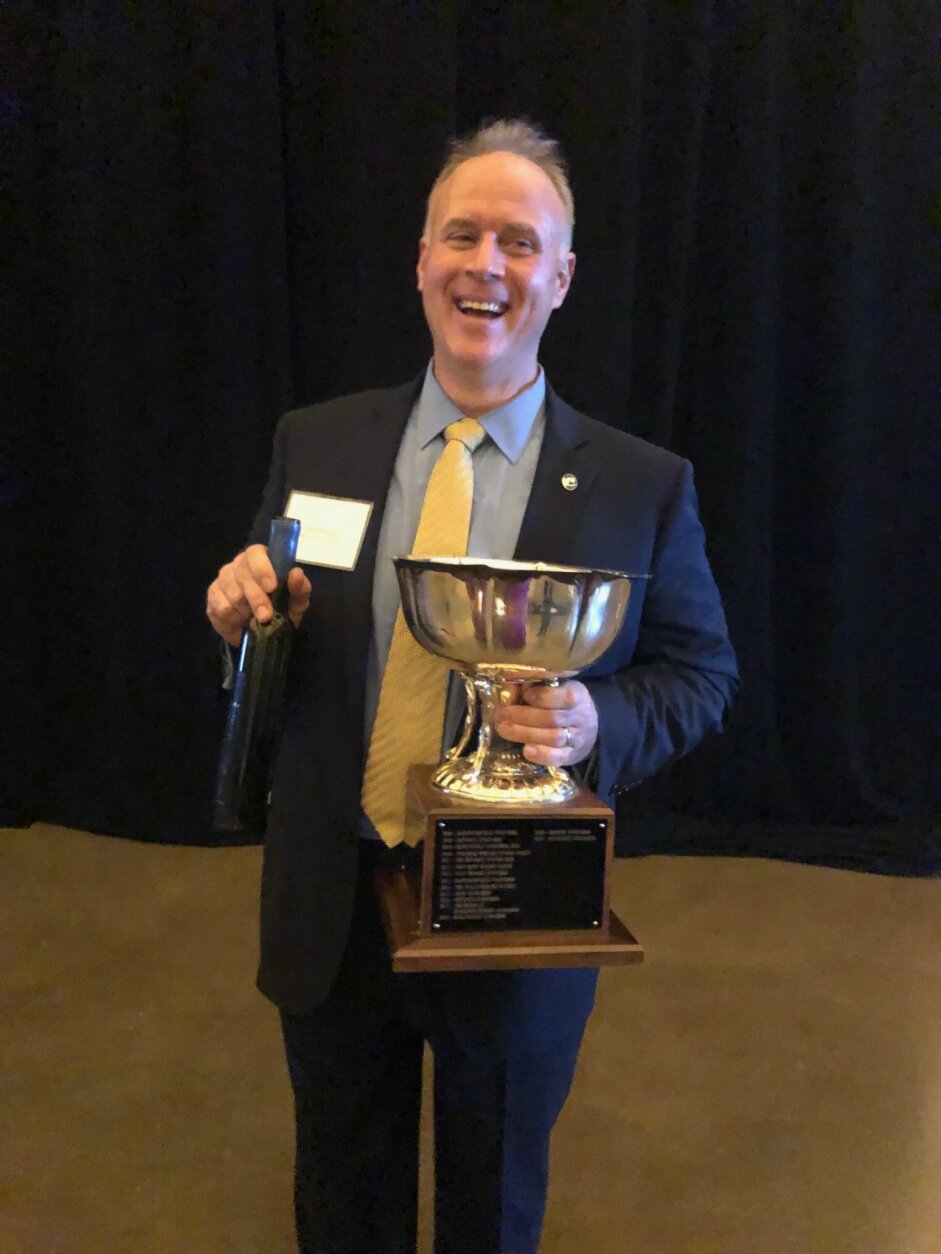

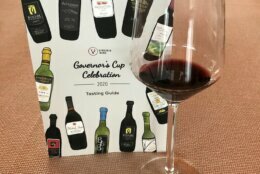

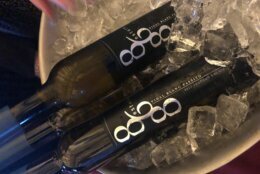



Central Virginia wineries dominated the 38th annual Virginia Wineries Association Governor’s Cup wine competition, but the top winner was a wine from Loudoun County.
Of the 12 wines that made it to the Governor’s Cup case, the ultimate winner Tuesday was the 868 Estate Vineyards in Purcellville, which won the top prize for its 2017 Vidal Blanc Passito.
Gov. Ralph Northam presented the winner with the Governor’s Cup at an event held at the Main Street Station in Richmond.
This is the first winner to come from Loudoun County, and the first that was made from hybrid grapes or non-vinifera.
Below are wines named in the Governor’s Case:
- Afton Mountain Vineyards Tradition (2017)
- Barboursville Vineyards Octagon (2014)
- Barboursville Vineyards Vermentino Reserve (2018)
- Delaplane Cellars Williams Gap (2017)
- Lake Anna Winery Tannat (2017)
- Michael Shaps Wineworks Meritage (2016)
- Pippin Hill Vineyards Petit Verdot (2017)
- Pollak Vineyards Cabernet Franc Reserve (2017)
- Pollak Vineyards Smuggler (2017)
- Rockbridge Vineyard V d’Or (2017)
- Shenandoah Vineyards Shenandoah Reserve Red (2017)
The wines in the competition were made from 100% Virginia grapes. There were 19 judges, who used a unified coding system to judge the wines over a four-week period in January and February.
They sampled over 532 wines submitted by 102 wineries, in one of the most stringent and thorough competitions in the country.
Sixty-four of the wines submitted were awarded the prestigious gold medal with scores of 90 or above in the 100-point system.
The 64 gold-medal recipients represented 40 wineries from across the state.
Virginia’s wine history dates to 1570, but modern Virginia wine only hit its stride in the past four decades. In 1979, there were only six commercial wineries. Currently, there are over 300 wineries in Virginia, according to Virginia Wine. More than 50 are within an hour of D.C.
“I feel like we are just beginning to see the potential of what we can do in the soil and in this climate,” said Annette Ringwood Boyd, Virginia Wine’s board marketing director.
Her office handles the board’s education and marketing efforts on behalf of all Virginia wineries.
“I feel like it has taken us a little bit of time to figure out what grape varieties will grow here and to coax the best wines out of those vines,” Boyd said.
Early on in the 1970s and 1980s, Virginia was considered a cold-weather wine region, and everybody was planting riesling and thinking that was going to be the grape that was going to take off, Boyd said.
“But that didn’t really happen, and Virginia is now considered a warm-weather region,” Boyd said, pointing out that many types of grapes can grow in this climate.
Winning people over on Virginia wines has been a long battle. Unlike wines from Argentina and New Zealand that have hundreds of thousands of acres to plant grapes and can flood the market at low prices, Virginia growers have small family-owned farms that grow 20 to 30 acres of grapes at a time, similar to growers in Oregon and Burgundy.
“We’ve got a long battle. We’ve got to win people over one bottle at a time,” Boyd said.
And with the state’s climate and soil, “It’s expensive to grow grapes in Virginia,” Boyd said.
But the style of wine that comes out of the state is reminiscent of the Old World.
“If you love Old-World style wines, if you like the wines of Spain, Italy, France, you are going to find wines here that you not only like but love, and you should come check it out,” Boyd said.

